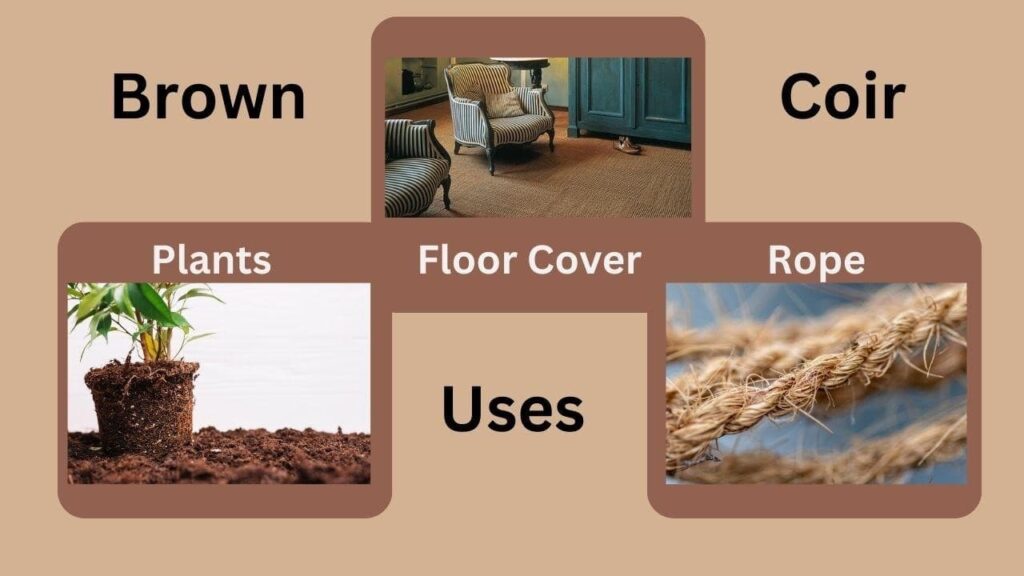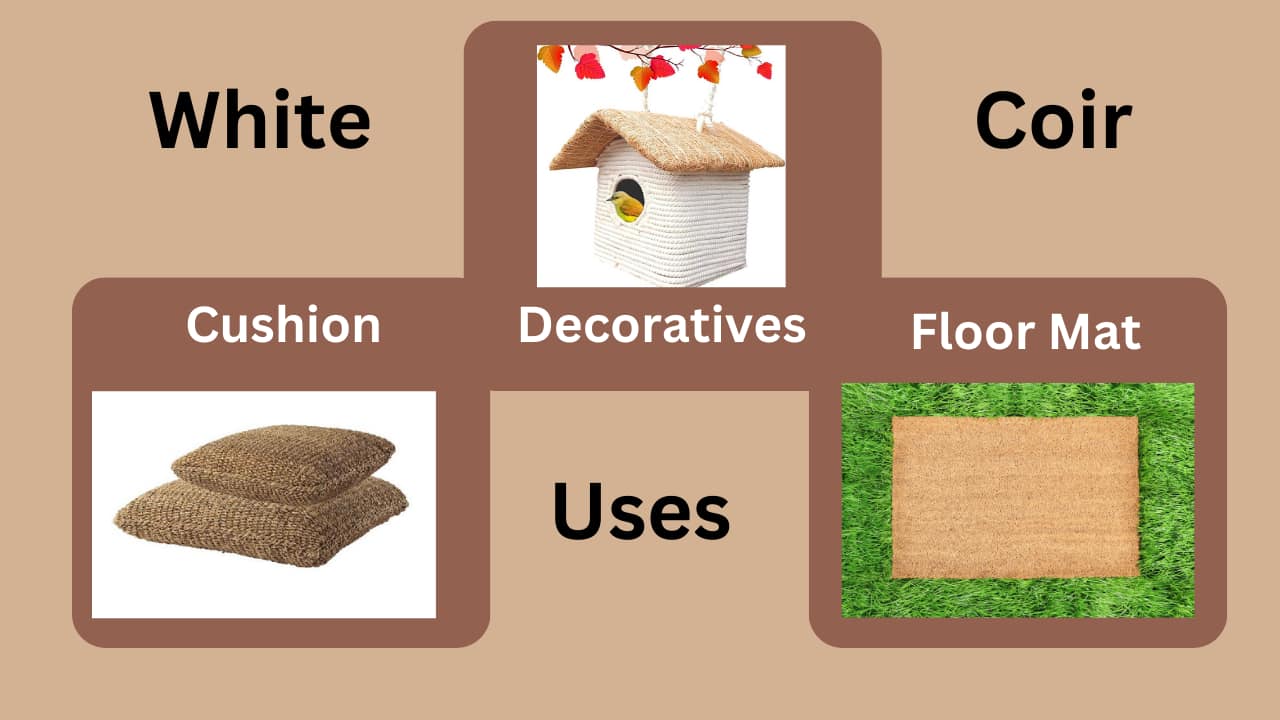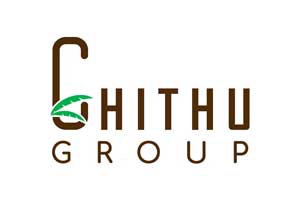Introduction:
In the world of natural fibers, coir takes a prominent place for its versatility, sustainability, and wide-ranging applications. Derived from the husk of coconuts, coir fiber is categorized into two main types: brown coir fiber and white coir fiber.
Each type of product has unique features that make it appropriate for different uses.
In this article, let us look into the unique characteristics, uses, and advantages of these two types of coir fiber.
Brown Coir Fiber:
Brown coir fiber, also known as mature coir fiber, is the product of ripe coconut husks that have undergone a natural ageing process, resulting in its remarkable durability and strength.
Extraction and Processing:
The extraction of brown coir fiber is a meticulous process. Ripe coconut husks are submerged in water for an extended period, allowing the husks to undergo microbial degradation.
This softens the husks and eases the separation of fibers. Mechanized decortication is then employed to extract the fibers, which are subsequently cleaned and dried thoroughly.

Characteristics and Properties:
Texture and Appearance: Brown coir fiber exhibits a coarse, tan-coloured exterior owing to its prolonged maturation process.
Sturdiness and Tenacity: One of its key attributes is its robustness, rendering it highly resistant to wear and tear. This specific trait makes it a perfect option for applications that require long-lasting durability.
Natural Water Resistance: Brown coir’s innate resistance to water makes it a dependable material for environments with high moisture levels.
Diverse Applications of Brown Coir Fiber:
Matting and Flooring: The coarse texture and durability of brown coir make it an excellent option for crafting sturdy mats, carpets, and floor coverings, particularly in high-traffic areas.
Erosion Control: Its strength and water resistance render it indispensable for erosion control mats, preventing soil erosion on slopes and riverbanks.
Aquaculture Applications: Brown Coir finds its use in aquaculture as a nesting material for certain fish species and a substrate for aquatic plants.
Horticulture and Gardening: Its water resistance and capacity to enhance soil aeration position it as a valuable addition to potting mixes, aiding in healthy plant growth.
White Coir Fiber:
Supple and Versatile Derived from the unripe green husks of coconuts, white coir fibre, also known as young coir fibre, boasts a softer texture and lighter color, making it suitable for applications requiring a gentle touch.
1. Extraction and Processing:
Extracting white coir fiber involves a slightly different approach. Young coconut husks are soaked in water for a shorter duration, allowing the fibers to be separated with mechanical processes. The fibers are subsequently cleansed and dried to produce the final product.
2. Characteristics and Properties:
Texture and Hue: White coir fiber stands out with its fine, smooth texture and color palette ranging from off-white to light beige.
Flexibility and Softness: Its pliable nature and gentle texture make it a preferred choice for applications where delicacy is paramount.
Hydration Absorption: White coir can absorb and retain water more effectively than its brown counterpart, making it suitable for water-based applications.

3. Versatility in Applications of White Coir Fiber
Bedding and Upholstery: The supple texture of white coir lends itself well to crafting comfortable mattresses, cushions, and upholstery items, offering a balance of support and softness.
Textiles and Fashion: It serves as an excellent ingredient in textile blends, resulting in lightweight fabrics and garments with an added touch of luxury.
Horticultural Use: White coir’s water retention properties make it a valuable component in hydroponic systems and as a growing medium for delicate plants.
Art and Craftsmanship: Its fine texture enables the creation of intricate baskets, decorative pieces, and sculptures.
Comparative Analysis: Choosing the Right Coir Fiber:
When considering the selection between brown and white coir fiber, their distinct characteristics play a pivotal role. Brown coir is durable and resilient, making it a preferred choice for heavy-duty applications and outdoor use. On the other hand, white coir’s softness and water retention capabilities make it suitable for indoor applications, textiles, and water-based environments.
Conclusion
Coir fiber, a product of nature’s ingenuity, offers us two distinct variations: brown and white coir fibre. Due to their unique attributes and properties, these fibers are used in various industries and applications.
While brown coir boasts robustness and is ideal for rugged applications, white coir’s delicate nature finds its niche in more refined uses.
As sustainable materials continue gaining importance, brown and white coir fibers shine as exemplars of nature’s bounty, offering solutions that align with ecological principles and functional excellence.
Looking for the best Coir Manufacturers & Exporter in India? Trust Chithu Group!
Chithu Group has built reputation on uncompromising quality and timely delivery, leading to strong relationships with both local and international customers.
Frequently Asked Question’s
